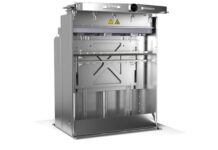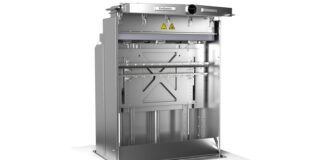Sammir Dattani, Director at Sanathan Textiles, shares his insights on the state of the textile industry in a conversation with Devanshu Srivastava of Textile South Asia. Addressing key questions on his journey, the industry’s current outlook, and ongoing modernization efforts.
Textile South Asia (TSA) – Sanathan Textiles has been a significant player in the textile industry. Can you give us a brief overview of the company’s journey so far?
Sammir Dattani – At Sanathan Textiles, we take immense pride in our journey since our establishment in 2005. Over the years, we have grown into a leading name in the textile yarn industry, with a strong presence across polyester filament yarn, cotton yarn, yarns for, and technical textiles. Our commitment to quality and innovative manufacturing has enabled us to provide high-quality yarns across various sectors, including apparel, home textiles, luggage, ropes, geogrid fabrics, seatbelts, upholstery, sportswear, innerwear, umbrellas, and personal protective equipment.
Our focus has always been on integrating advanced technology and sustainable practices, ensuring consistency in quality while addressing evolving industry demands. The collective expertise of our promoters and senior management, spanning several decades, has been a key driving force behind our growth. Our strategic vision and strong stakeholder relationships have played a crucial role in expanding our product range and reinforcing our industry leadership.
A significant milestone in our journey was securing our IPO in December 2024, marking a new chapter in our growth story. As we move forward, we remain committed to innovation, sustainability, and delivering value to all our stakeholders.
TSA – What is the total production capacity of Sanathan Textiles, and are there any expansion plans in the pipeline?
Sammir Dattani – We are significantly boosting our production capacity with a new greenfield polyester filament facility in Wazirabad, Punjab. The first phase of this project, backed by an investment of ₹1,850 crore, is expected to become operational in the first quarter of FY26. This expansion will gradually increase our polyester filament yarn production from the current 550 tonnes per day to 1,500 tonnes per day in a phased manner.
In fact, the first phase alone will add around 250,000 tonnes annually, while the second phase, with an additional investment of ₹250 crore, will further enhance our production capacity to 355,000 tonnes annually. This strategic expansion is aimed at addressing the supply gap in North India, enabling us to ensure faster deliveries and improve cost efficiencies for our customers.
Moreover, this project reinforces our commitment to strengthening India’s textile ecosystem while integrating sustainable manufacturing practices to minimize environmental impact and enhance operational efficiency.
TSA – Can you share insights into the total industry verticals that Sanathan Textiles serves?
Sammir Dattani – At Sanathan Textiles we offer a wide range of yarn solutions, serving diverse industry verticals with over 12,000+ yarn products.
 We take pride in the fact that we provide our customers with a one-stop solution for all their yarn-sourcing needs. Our integrated manufacturing setup is designed to produce made-to-order (MTO) yarns, niche yarns, coloured yarns, and other value-added offerings that cater to a variety of applications.
We take pride in the fact that we provide our customers with a one-stop solution for all their yarn-sourcing needs. Our integrated manufacturing setup is designed to produce made-to-order (MTO) yarns, niche yarns, coloured yarns, and other value-added offerings that cater to a variety of applications.
Key Industry Verticals We Serve:
- Apparel & Home Textiles: Our ‘Puro Cotton Yarns’ are widely used for fabrics in apparel, suiting, shirting, bedsheets, and home textiles. We focus on producing fine-count compact yarns to meet the highest quality standards
- Polyester Yarns: With a manufacturing capacity of over 200,000 MTPA, our fully integrated polyester division processes petrochemicals to create a variety of polyester filament yarns. Our polymerization setup, equipped with three lustres, provides us with the flexibility to meet diverse customer requirements with a wide product offering.
- Technical Textiles & Industrial Applications: We also produce yarns with a manufacturing capacity of 9,000 MTPA for technical textiles used in agriculture, roads, Automotive, sportswear, healthcare, and specialized applications such as bulletproof jackets, fireproof gear, high-altitude combat gear, and even space applications
Eco-Friendly & Performance Yarns:
- Sanathan Drycool: We are also particularly proud of our eco-friendly, born-dyed yarn with moisture management properties, making it ideal for gym wear and active wear fabrics. By eliminating the need for conventional dyeing, this solution offers a sustainable and value-added alternative
- S-Flex: Another innovation we’ve introduced is S-Flex, a revolutionary self-stretch polyester filament yarn with four-way stretch capabilities, without the use of spandex. It mimics the appearance of cotton while providing wrinkle resistance and dimensional stability, making it perfect for knitted fabrics, woven fabrics, swimsuits, leggings, and other high-performance textiles.
Our focus remains on delivering innovative and sustainable yarn solutions that cater to the evolving needs of our customers across multiple industries.
TSA – Which segment of your business — polyester, cotton or technical textiles—contributes the most to your revenue?
Sammir Dattani – At Sanathan Textiles, our Polyester Filament Yarns (PFY) segment is the largest revenue driver, contributing around 77% of our total sales. Our integrated manufacturing process allows us to produce a wide range of value-added yarns, including draw-texturized yarns, air-texturized yarns, twisted yarns, dope-dyed coloured yarns, and stretch yarns, catering to diverse industry needs.
Our Cotton Yarns segment accounts for 19% of our revenue, with a strong focus on premium compact cotton yarns, particularly finer counts like 60s, which are widely used in high-end home textiles and apparel manufacturing. Looking ahead, we are excited about our plans to invest ₹400 crore in a new cotton yarn facility, which will be implemented post the first phase of our Punjab expansion.
The Technical Textile Yarns segment, though currently smaller, is an emerging growth area, contributing 4% of our revenue. With increasing government incentives and growing industry demand, we are doubling our technical textile yarn capacity from 9,000 tonnes to 18,000 tonnes as part of our Punjab expansion plan. These specialized yarns are used in automotive fabrics, medical textiles, and geotextiles, among other industrial applications.
With a diversified product portfolio and strategic investments, we are well-positioned to capitalize on growth opportunities across multiple industry segments while reinforcing our leadership in the textile sector.
TSA – What were the primary reasons for Sanathan Textiles to go public at this time?
Sammir Dattani – Our decision to get listed was driven by a strategic vision to accelerate growth, strengthen our market position, and create long-term value for our stakeholders.
As we embark on a phase of significant expansion, including the development of our greenfield polyester filament yarn facility in Punjab, raising capital through an IPO has provided us with the necessary funds to support these initiatives.
Going public has also enhanced our financial flexibility, allowing us to invest in capacity expansion, technological upgrades, and sustainable manufacturing practices. Additionally, it has strengthened our brand reputation and increased transparency — which is essential for building trust with our customers, partners, and investors.
The IPO has also allowed us to diversify our shareholder base and create an opportunity for valued stakeholders to be a part of our growth journey. By accessing the capital markets, we aim to scale our operations efficiently, explore new growth avenues, and reinforce our commitment to innovation and sustainability in the textile industry.
TSA – What are the company’s main goals post-IPO, and how do you plan to utilize the ₹550 crore raised?
Sammir Dattani – Following our successful IPO, we have outlined a clear roadmap to drive growth, enhance operational efficiency, and strengthen our market presence. The ₹550 crore raised was used for the purpose of repaying the debts at Sanathan Textiles and Sanathan Polycot. Further, we are able to raise fresh debts for our expansion, which shall happen in the coming future. We plan to execute a growth story in terms of expansion in all the three yarn segments.
- Expansion in Punjab of the Polyester Filament division.
- Strengthening Investments in Technical Textiles
- Focus on Innovation and Sustainability
With this strategic roadmap, we are well-positioned to scale our operations, explore new growth avenues, and reinforce our commitment to innovation and sustainability, ensuring long-term value creation for our stakeholders.
TSA – How does the company plan to maintain transparency and communication with its new shareholders?
Sammir Dattani – We ensure transparency and effective communication with our shareholders by consistently disseminating all recent developments through stock exchange filings, keeping them informed and engaged with the company’s progress.
TSA – How does the company view the current state and future prospects of the textile industry in India?
Sammir Dattani – India’s textile industry is on a strong growth trajectory, driven by rising domestic consumption, export demand, and supportive government initiatives. As one of the world’s largest textile producers, India’s cost efficiency, skilled workforce, and advanced production capabilities bolster its global competitiveness.
Government programs like PLI, PM MITRA Parks, and technical textile incentives are set to accelerate industry expansion. Emerging segments, particularly technical textiles in agriculture, defence, healthcare, and infrastructure, present significant opportunities. With sustainability gaining traction, demand for eco-friendly, value-added yarns is expected to grow, aligning with our innovations like Sanathan Drycool, CDP and S-Flex.

Automation and smart technologies will further enhance efficiency and product quality, strengthening India’s global position. Additionally, the diversification of export markets and shifting global supply chains open new avenues for growth.
At Sanathan Textiles, we remain optimistic and are strategically expanding capacity, investing in technology, and prioritizing sustainability to capitalize on these opportunities.
TSA – What innovations or product developments can we expect from Sanathan Textiles in the near future?
Sammir Dattani – We have a clear roadmap for expansion, starting with the commissioning of phase one of our Punjab plant in FY26. Additionally, phase two of our polyester expansion is planned for FY27. These developments are expected to drive our revenues beyond ₹7,500 crores by FY 28, with a strong focus on improving margins through innovative and value-added products.
We are also exploring opportunities in technical textiles to strengthen our presence across the textile value chain. Our long-term strategy revolves around automation, enhancing process efficiency, and continuous R&D to drive sustainable growth.
The upcoming Punjab facility will play a crucial role in enhancing supply chain efficiency and solidifying our market position. With a strong focus on innovation and expansion, we are confident that Sanathan Textiles is well-positioned to capitalize on emerging opportunities in both domestic and international markets.








